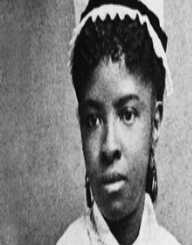
Mary eliza mahoney r.n professional#
And their exclusion from membership in professional nursing organizations denied them legitimacy in an America that already harbored preconceived ideas about the competence of black nurses.įaced with this reality, Mary Eliza Mahoney chose to work as a private-duty nurse, her clientele consisting mostly of wealthy white families up and down the Eastern Seaboard. They could care for black clients in their homes as private-duty nurses, or limit their hospital practice to caring for black patients only. Graduate black nurses had limited practice opportunities and earned lower wages than their white colleagues. If nursing school was tough, it was nothing compared to the discrimination she encountered in her attempt to pursue a career in public nursing.īut if nursing school was tough, it was nothing compared to the discrimination she encountered in her attempt to pursue a career in public nursing. Mary Eliza Mahoney was one of them, making her the first African American woman in the United States to earn a professional nursing license. Of the 42 students who entered the school in 1878, only four completed the course, graduating in 1879.
Mary eliza mahoney r.n free#
Students worked from 6 AM until 9 PM and, in their free time, were expected to do chores like laundry, ironing and cleaning. Four months of private-duty nursing in local Roxbury homes followed. Students received 12 months of medical, surgical and maternal health training, attending lectures and afforded valuable hands-on hospital experience. The school’s 16-month program was rigorous. And in 1878, at age 33, Mary Mahoney became one of them. The NEHWC was one of those institutions, limiting its admission of black students to two a year. Every year, a select few were admitted to meet rigidly enforced institutional quotas in what amounted to de facto segregation. NEHWC also operated one of America’s first nursing schools at a time when African American nursing students were routinely excluded from white hospital-based nursing schools. More importantly, she had the opportunity to work as a nurse’s aide, gaining valuable hands-on experience. Mary Eliza Mahoney was there for 15 years, working in various capacities as a cook, janitor and laundress. Mary Mahoney (bottom row, center) became an activist and advocate for the integration of African Americans into the nursing profession. Exceptional for its place in the history of women in medicine, it had an all-female physician staff.

NEHWC was the first hospital in New England, and the second in America, established and operated by women for women. She had always wanted to be a nurse when she started working at the New England Hospital for Women and Children, known today as Dimock Community Health Center. In 1855, by an act of the Massachusetts legislature, it became one of Boston’s first integrated schools. Jamaica’s Mary Seacole nursed soldiers during the Crimean War Harriet Tubman and Susie King Taylor tended the Civil War’s wounded and Namahyoke Sockum Curtis battled typhoid, yellow fever and malaria as a nurse during the Spanish-American War.īorn in 1845 to freed slaves who traveled to Boston from North Carolina, Mary Mahoney was educated at the Phillips School, named for the father of abolitionist Wendell Philips and considered one of the best schools in the city. When Mary Eliza Mahoney graduated in 1879 as America’s first professional nurse, she stood on the shoulders of giants. In 1879, Mary Mahoney made American history when she graduated from the New England Hospital for Women and Children’s nursing school as the first African American to become a professional, licensed nurse.


 0 kommentar(er)
0 kommentar(er)
